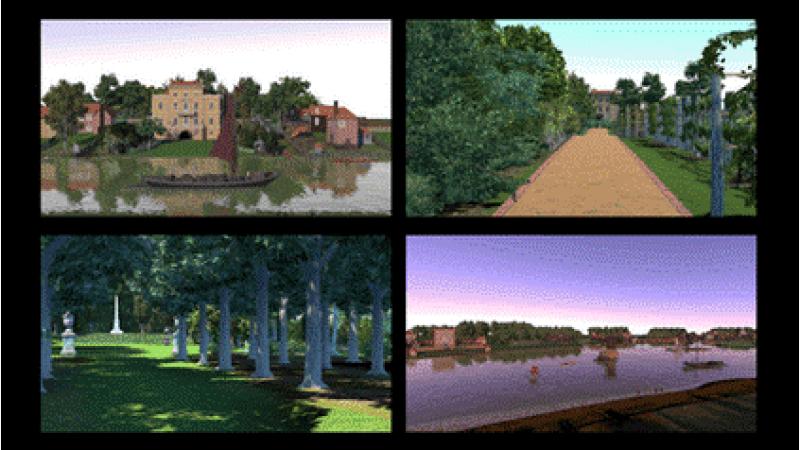Professor Paul Richens, architect and part-time research chair at Westminster’s School of Architecture and Cities, was recently commissioned to digitally recreate the garden and villa of poet Alexander Pope.

The interactive digital reconstruction shows Alexander Pope’s villa overlooking the Thames in Twickenham, with his five-acre garden behind it on the other side of the road. Viewers will be able to gain an understanding of Pope’s life in Twickenham in 1740, which has been meticulously researched and reconstructed from historical sources.
Alexander Pope’s garden was considered to be one of the most important landscapes in the history of European design, and throughout the 18th and 19th centuries influenced gardens across the continent. His famous grotto, a decorated tunnel leading from the cellar to his garden, is the last remaining part of Pope’s physical works.
Pope’s Grotto Preservation Trust commissioned Professor Richens to create an interactive digital reconstruction of the villa and garden, together with the adjacent Thames and the buildings along the river.
The experience starts in a wherry (rowing boat) on the Thames at Twickenham, where visitors are able to disembark on the lawn in front of Pope’s villa and walk through the grotto into the garden.
Alexander Pope was a profound English poet of the Augustan period, best known for his satirical and discursive poetry, alongside being the master of the heroic couplet. His villa and garden, located in Twickenham, are considered to be a significant part of British culture, with his remaining grotto being of outstanding national significance.
In his role as part-time research chair at Westminster, Professor Richens continues to work on the virtual reconstruction of historic building and cultural landscapes.
Speaking about the digital reconstruction, he said: “Architectural and archaeological computer graphics though useful, tend to be prosaic and visually bland. This project set out to be scholarly and informative, but astonished us all in the end by being utterly and absorbingly beautiful. Finally we understood why Pope’s garden had been so renowned in his own age.”
Watch the reconstruction online.


